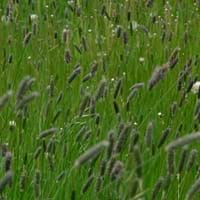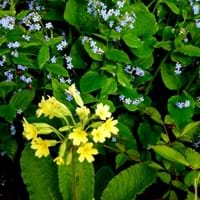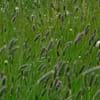Life Span
Perennial
Annual
Type
Grass
Flowering Plants, Ornamental Plants
Origin
Europe, Asia
Asia, Europe
Types
not available
Not Available
Habitat
Grassland
Old fields, Open grasslands
USDA Hardiness Zone
5-8
5-8
Sunset Zone
2a, 2b, 3a, 3b, 4, 5, 6, 7, 8, 9, 10, 14, 15, 16, 17, 21, 22, 23, 24
1a, 1b, 2a, 2b, 3a, 3b, 4, 5, 6, 7, 8, 9, 10, 11, 12, 13, 14, 15, 16, 17, 18, 19, 20, 21, 22, 23, 24
Habit
Clump-Forming
Clump-Forming
Flower Color
White
Yellow
Flower Color Modifier
Bicolor
Bicolor
Fruit Color
Not Available
Non Fruiting Plant
Leaf Color in Spring
Green
Green
Leaf Color in Summer
Light Green
Green
Leaf Color in Fall
Green
Green
Leaf Color in Winter
Tan
Light Green
Leaf Shape
Grass like
Oblong
Plant Season
Spring, Summer, Fall, Winter
Summer
Sunlight
Full Sun
Full Sun, Partial Sun
Growth Rate
Medium
Medium
Type of Soil
Clay, Loam, Sand
Loam, Sand
The pH of Soil
Acidic, Neutral, Alkaline
Acidic, Neutral, Alkaline
Soil Drainage
Average
Well drained
Bloom Time
Spring, Summer
Early Summer, Summer, Late Summer
Tolerances
Wet Site
Variety of soil types
Where to Plant?
Ground
Container, Ground, Pot
How to Plant?
Seedlings
Divison, Seedlings, Stem Planting
Plant Maintenance
Medium
Low
Watering Requirements
Requires a lot of watering, Requires regular watering
Average Water Needs, Do Not over Water, Never Over-water, Requires regular watering, Water more in summer
In Summer
Lots of watering
Lots of watering
In Spring
Ample Water
Moderate
In Winter
Moderate
Average Water
Soil pH
Acidic, Neutral, Alkaline
Acidic, Neutral, Alkaline
Soil Type
Clay, Loam, Sand
Loam, Sand
Soil Drainage Capacity
Average
Well drained
Sun Exposure
Full Sun
Full Sun, Partial Sun
Pruning
Prune to control growth
Remove damaged leaves, Remove dead branches, Remove dead leaves, Remove dead or diseased plant parts
Fertilizers
Requires high amount of nitrogen
All-Purpose Liquid Fertilizer, fertilize in growing season
Pests and Diseases
Red blotch
Slugs, Snails
Plant Tolerance
Wet Site
Variety of soil types
Flower Petal Number
Single
Single
Foliage Texture
Medium
Fine
Foliage Sheen
Matte
Matte
Attracts
Not Available
Insects
Allergy
Asthma, conjunctivitis, Rhinitis
Abdominal pain, Constipation, Diarrhea, Skin irritation
Aesthetic Uses
Not Used For Aesthetic Purpose
Beautification, Borders, Landscape Designing, Showy Purposes
Beauty Benefits
Not Available
Good for skin, Making cosmetics, Stops hair loss
Environmental Uses
Food for animals, Food for insects, Wildlife
Air purification, Food for insects, Versatility
Medicinal Uses
No Medicinal Use
Eczema
Part of Plant Used
Whole plant
Root
Other Uses
cultivated as pasture or hay crop, Food for animals, Food for insects
Decoration Purposes, Medicinal oil, Showy Purposes, Used as Ornamental plant, Used for its medicinal properties
Used As Indoor Plant
No
Yes
Used As Outdoor Plant
Yes
Yes
Garden Design
Feature Plant, Groundcover, Rock Garden / Wall
Edging, Feature Plant, Groundcover, Mixed Border
Botanical Name
ALOPECURUS pratensis
Primula veris
Common Name
Meadow Foxtail
cowslip, common cowslip, cowslip primrose
In Hindi
Meadow Foxtail
cowslip primrose
In German
Wiesenfuchsschwanz
Echte Schlüsselblume
In French
vulpin des prés
Brérelle, le Coqueluchon, le Coucou, l’Herbe à la paralysie, l’Herbe de saint Paul, la Primerolle, la Primevère de printemps ou la Printanière
In Spanish
pradera de cola de zorra
Primula veris
In Greek
Meadow Foxtail
πασχαλίτσα primrose
In Portuguese
Meadow Foxtail
prímula cowslip
In Polish
łąka ber
Pierwiosnek lekarski
In Latin
meadow Foxtail
cowslip Primrose
Phylum
Magnoliophyta
Magnoliophyta
Class
Liliopsida
Magnoliopsida
Family
Poaceae
Onagraceae
Genus
Alopecurus
Oenothera
Clade
Angiosperms, Commelinids, Monocots
Angiosperms, Eudicots, Rosids
Tribe
Not Available
Onagreae
Subfamily
Not Available
Onagroideae
Number of Species
Not Available
Importance of Meadow Foxtail and Cowslip Primrose
Want to have the most appropriate plant for your garden? You might want to know the importance of Meadow Foxtail and Cowslip Primrose. Basically, these two plants vary in many aspects. Compare Meadow Foxtail and Cowslip Primrose as they differ in many characteristics such as their life, care, benefits, facts, etc. Every gardener must at least have the slightest clue about the plants he wants to plant in his garden. Compare their benefits, which differ in many ways like facts and uses. The medicinal use of Meadow Foxtail is No Medicinal Use whereas of Cowslip Primrose is Eczema. Meadow Foxtail has beauty benefits as follows: Not Available while Cowslip Primrose has beauty benefits as follows: Not Available.
Compare Facts of Meadow Foxtail vs Cowslip Primrose
How to choose the best garden plant for your garden depending upon its facts? Here garden plant comparison will help you to solve this query. Compare the facts of Meadow Foxtail vs Cowslip Primrose and know which one to choose. As garden plants have benefits and other uses, allergy is also a major drawback of plants for some people. Allergic reactions of Meadow Foxtail are Asthma, conjunctivitis and Rhinitis whereas of Cowslip Primrose have Abdominal pain, Constipation, Diarrhea and Skin irritation respectively. Having a fruit bearing plant in your garden can be a plus point of your garden. Meadow Foxtail has showy fruits and Cowslip Primrose has no showy fruits. Also Meadow Foxtail is not flowering and Cowslip Primrose is flowering. You can compare Meadow Foxtail and Cowslip Primrose facts and facts of other plants too.





